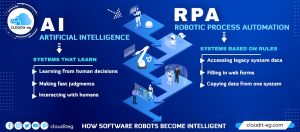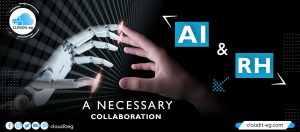Aiming to simulate human intelligence, artificial intelligence has emerged since the early 2010s, driven by deep learning, big data, and the explosion of computing power.
1. Artificial intelligence, what is it?
Artificial intelligence (AI) refers to “an application capable of handling tasks which are, for the time being, performed more satisfactorily by human beings insofar as they involve high-level mental processes such as learning perceptual, the organization of memory and critical thinking “. This is how the American scientist Marvin Lee Minsky, considered the father of AI, defines this concept. It was in 1956 during a meeting of scientists in Dartmouth (south of Boston) organized to consider the creation of thinking machines that he managed to convince his audience to accept the term.
Following initial work, particularly around expert systems, AI emerges much later. In 1989, the Frenchman Yann Lecun developed the first neural network capable of recognizing handwritten numbers. But it was not until 2019 that his research and that of Canadians Geoffrey Hinton and Yoshua Bengio were crowned with the Turing Prize. Why? Because of work, deep learning faces two obstacles. The first is the computing power needed to train neural networks. The emergence of graphics processors in the 2010s provides a solution to the problem. Then, learning obviously involves having massive volumes of data. On this level, the Gafam has since done well, but data sets have also been released in an open-source such as ImagiNET.
2. Getting started with an AI project: tips
Before embarking on the deployment of an AI, it will obviously be necessary to integrate the vocabulary of artificial intelligence, as well as the potential and the constraints of the main methods of machine learning: supervised learning, unsupervised learning, semi-supervised learning. , reinforcement learning …
Likewise, many machine learning algorithms are available, from the simplest to the most complex:
Regression, decision tree, random forest, support vector machine, neural network (read our article Which artificial intelligence is right for you? ).
Depending on the problem to be solved and the quality of the training data set, each will lead to predictions with a more or less precise precision score.
2. Comparative
Machine learning and deep learning infrastructures or libraries, automated machine learning environments, data science studios … Tools abound in the field of artificial intelligence. Hence the importance of comparing the strengths and weaknesses of each person to make the right choice.
3. How AI is revolutionizing the economy
Automotive, banking-finance, logistics, energy, industry … No sector of activity is spared by the rise of artificial intelligence. The JDN deciphers the underlying technological challenges and the potential that machine learning can bring to teams in the field.
3. Technical slides
Obviously, the digital giants have not waited to exploit the full potential that artificial intelligence can bring them. With unprecedented volumes of personal data, they compete in inventiveness in the use of learning algorithms articulated around psychographic segmentation to meet the most diverse needs: research, advertising targeting, talent detection. , voice interface …
Artificial intelligence has given birth to a whole host of new skill profiles. The first of them is none other than the data scientist. He is expected to have skills in big data, algorithms, statistics, data visualization, but also business expertise.
With the rise of AI projects, a new profile comes to support the generalist data scientist: the machine learning engineer. He is a specialized data scientist whose mission is to cover the entire life cycle of a learning model, from its design and training to monitoring, obviously including its deployment (read the article Machine learning engineer: a new star profession in data science ).




